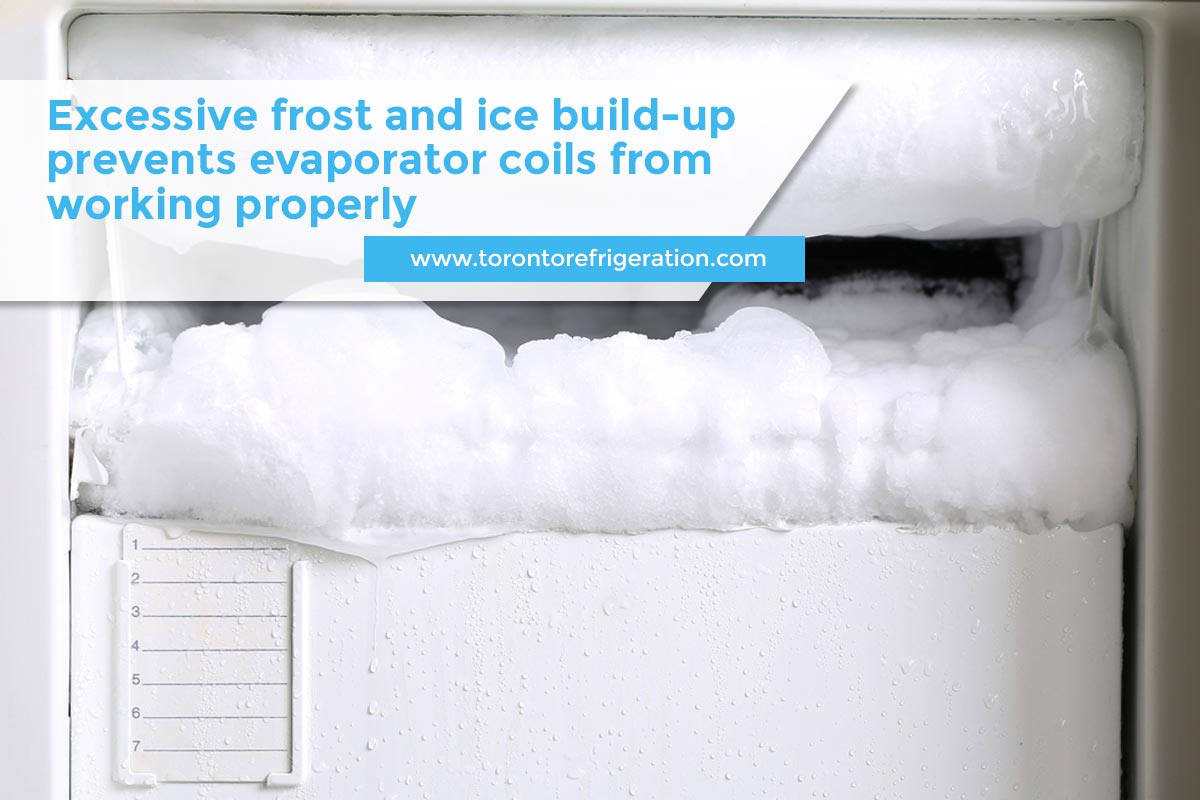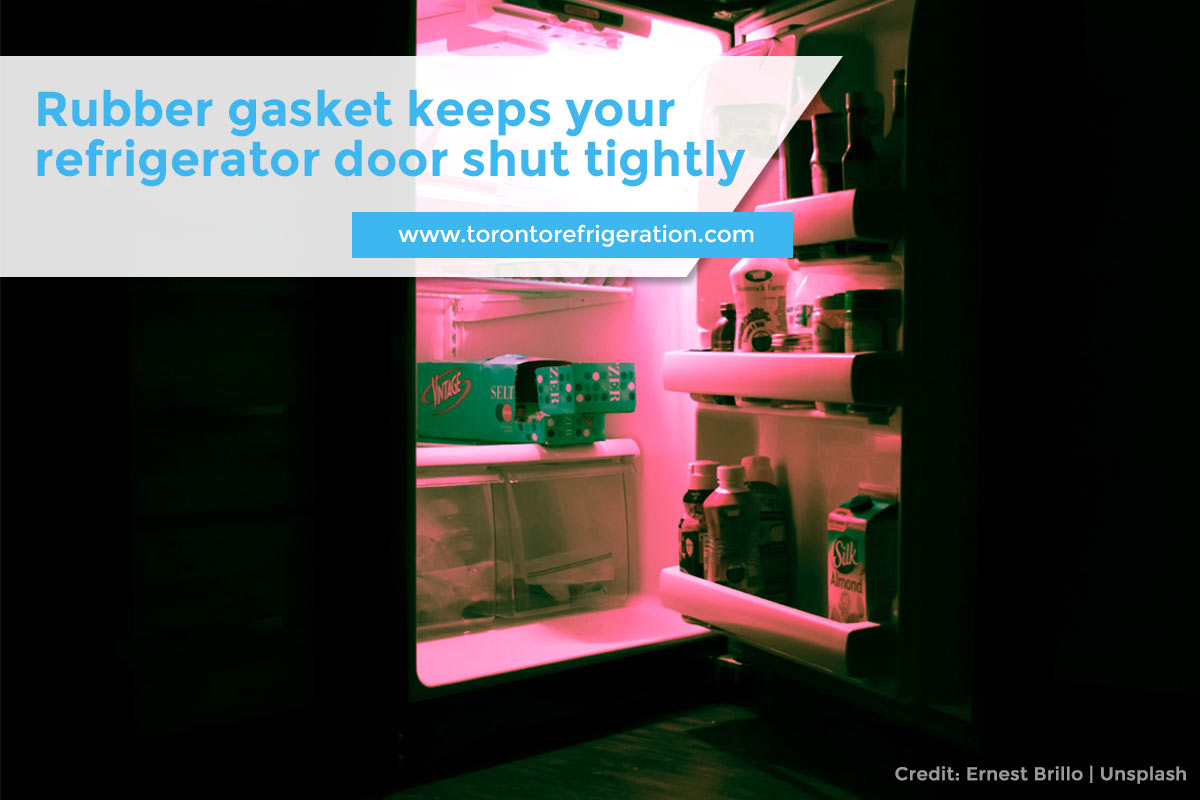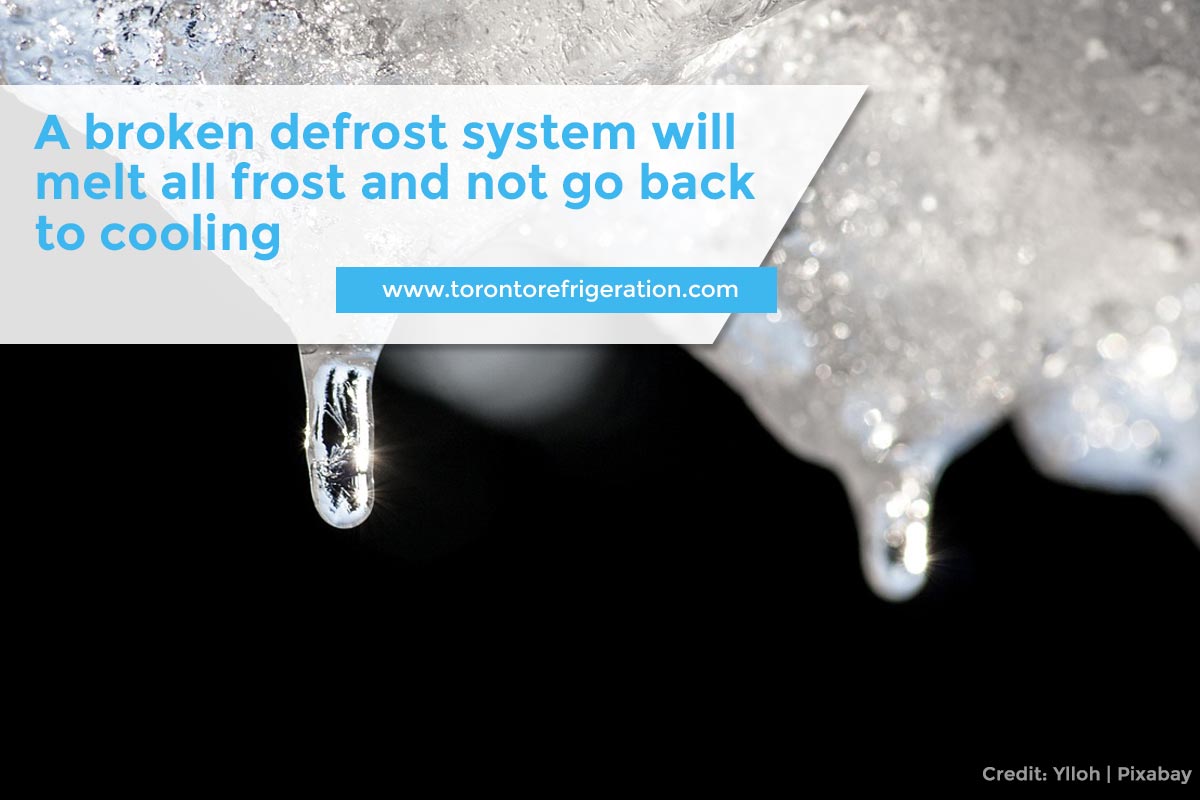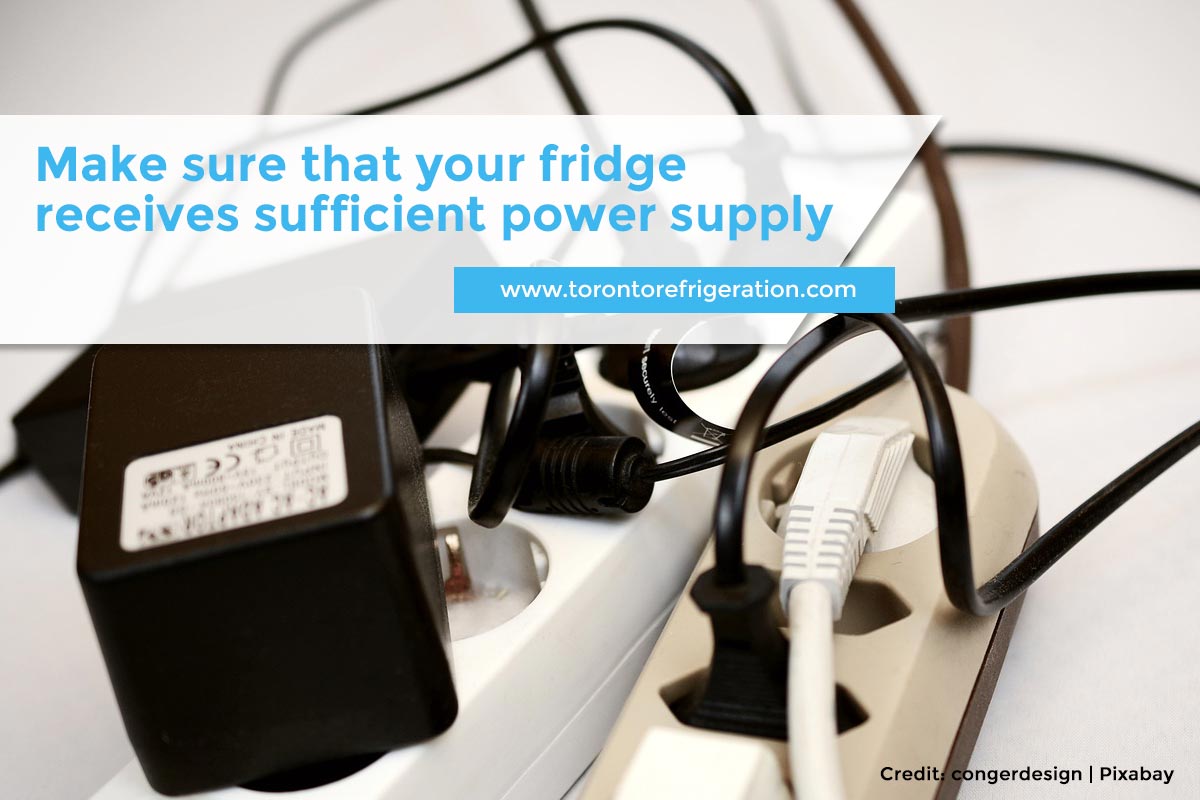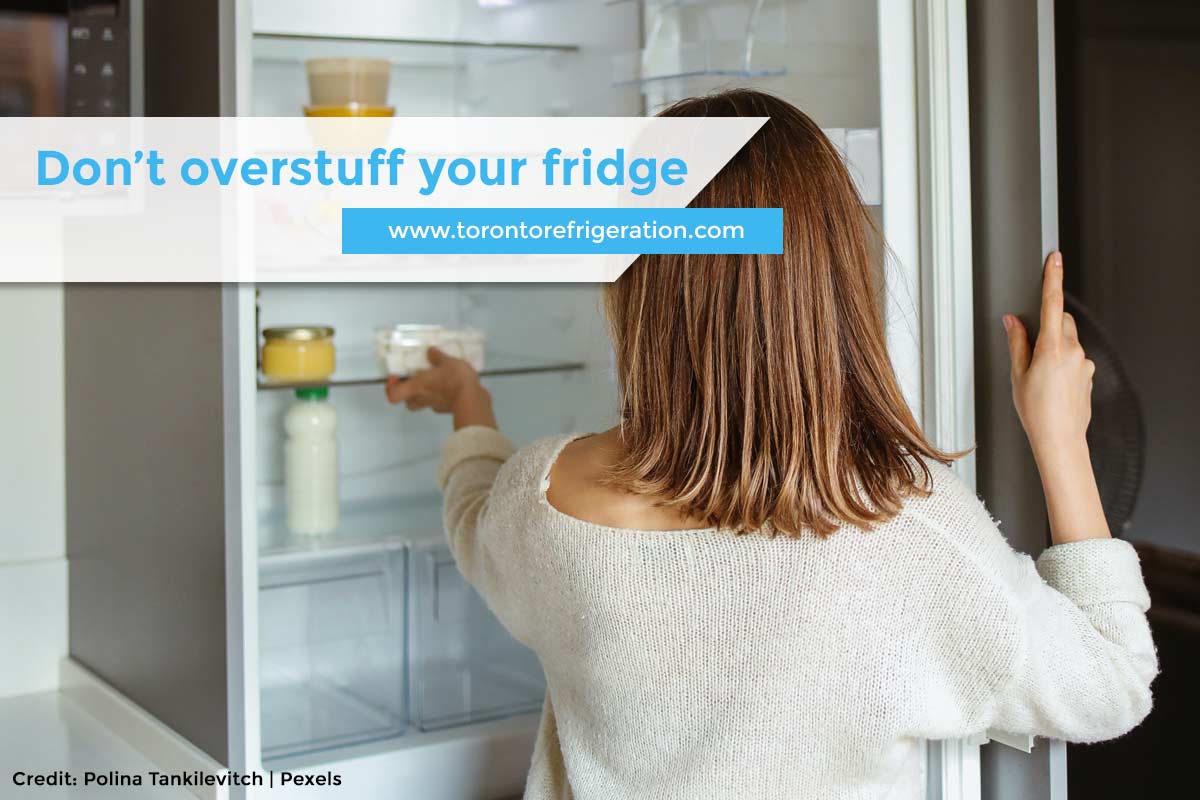Fridge Not Cooling? Causes & Fixes Explained
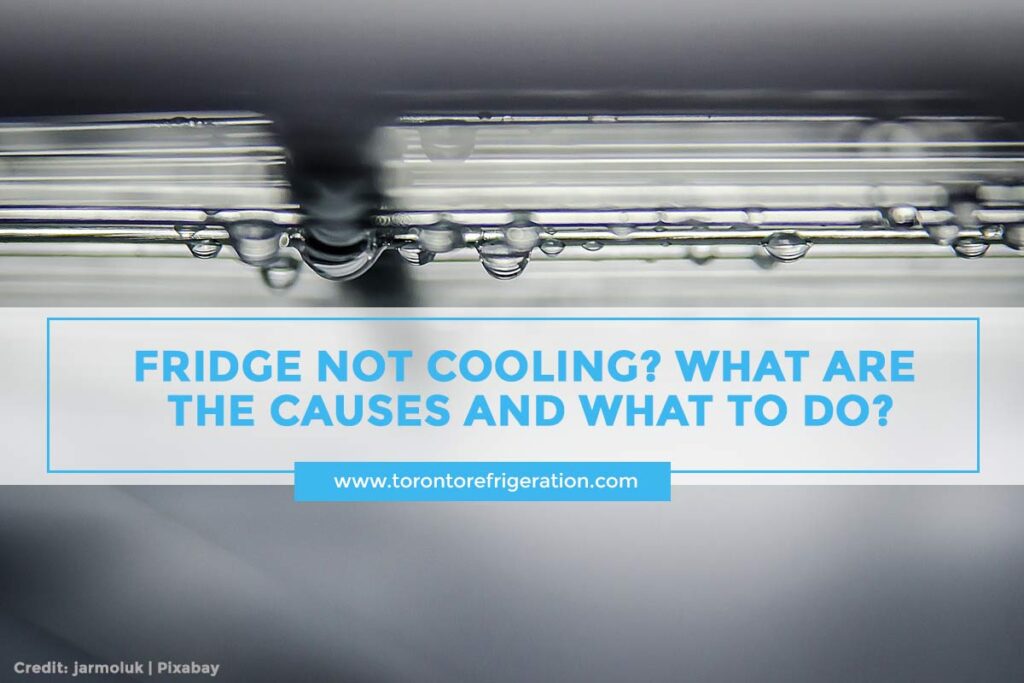
Coming home one day and finding out that your fridge is not cooling is probably one of the most cumbersome situations. On top of the inconvenience, you are also at risk of spoiling the food you have inside and creating a mess in your kitchen.
Appliances breaking down is almost always baffling, but before you panic, you should know that this is a common problem, and there are several things you can do.
What Causes a Fridge to Break Down?
If you are wondering why the refrigerator is not cooling but the freezer works or how come the light is still on when the refrigerator is broken, here are a few common causes:
- Excessive Frost Development on the Evaporator Coils
An evaporator coil is a component that’s mostly responsible for making the inside of the refrigerator cold. Typically, the coil’s temperature runs at around -10 °F or -12.22 °C. At this temperature, it is only a matter of time before the evaporator coils will be choked up with frost and ice. Once this happens, the circulating fan can’t draw air across the coils to get chilled.
- Faulty Evaporator Fan
The fan allows the cold air to circulate from the freezer to other compartments inside the fridge. When it stops working, the cool air will not be able to reach the food section. As a result, you may get a cold freezer while the rest remains warm. - Faulty Compressor
A refrigerator compressor is responsible for moving the refrigerant through the system. First, it compresses the refrigerant from a low-pressure cool vapour into high-pressure hot vapours. These hot vapours then flow through the condenser where it turns into a high-pressure liquid. The liquid continues to flow through the evaporator coil where it evaporates and cools down back into a low-pressure vapour. The air flows over the coils, keeping your fridge cold.
Needless to say, the compressor is at the heart of the refrigeration cycle. So when it does not work properly, the entire cooling process will not even start.
- Faulty Door Gaskets
The door gasket is a small and fairly inexpensive component in your refrigerator. Its job is simple — to keep your doors sealed tight when you close it — yet plays a big part in keeping your appliance working properly. The gasket keeps the cold air inside and the hot air out.
If you happen to own an old refrigerator, there is a high chance that it may have experienced wear and tear. When it cracks, dries out, or damaged, air could start to leak out, and the refrigerator would be unable to maintain an even temperature. Problems with the gasket can also cause motor problems if left unfixed.
- Insufficient Refrigerant
If you consider the compressor as the heart, the refrigerant will be its blood. it constantly changes state throughout the refrigeration process, absorbing heat from the environment and cooling the unit. Without refrigerant, refrigeration and freezing would be impossible.
If your fridge is experiencing leakage or operating on an insufficient level of refrigerant in your fridge, it has negative effects on the cooling inside the appliance.
- Dirty Condenser Coils
Condenser coils contain the refrigerant, so when it goes bad, heat will not flow out of the coils correctly. The heat will stay inside the refrigerator, affecting its temperature levels. This part of the appliance is often unsealed and can get clogged easily with debris, hair, dust, or even animal fur. - Broken Defrost System
Many modern refrigerators have a built-in defrost system that controls its cooling and defrosting cycle. Auto-defrosting is mainly thanks to 2 components of the defrost system:
- Defrost timer – It is responsible for switching the refrigerator between cooling and defrosting mode. If the timer is broken, it can either stick with cooling mode, which can cause frost to accumulate and reduce airflow. Alternatively, it can stop at defrosting, where it melts all frost and does not go back to cooling.
- Defrost Heater – It prevents the evaporator coils from getting frosted completely. If it doesn’t work properly, excessive frost and ice development can choke the airflow inside the refrigerator.
If any of the 2 breaks, your refrigerator wouldn’t recognize when to start cooling or when to defrost.
- Defective Start Capacitor and Start Relay
The start relay is a small device that jump-starts the compressor. On the other hand, a start capacitor provides a boost for the compressor to start. If either of these components is defective, the compressor will not start. As a result, the cooling process of the refrigerator will also not commence. - Faulty Thermistor
The thermistor is a sensor whose sole purpose is to send a signal to the control board when there is a temperature change in the refrigerator. By doing so, the unit is able to control its air temperature and control the start and end of a cooling cycle.
If the thermistor is faulty, the refrigerator may either not cool at all or will only continue to cool.
- Bad Air Movement
It may be surprising but a fridge filled to the brim with food could be a bad thing. There is a difference between organizing and simply stacking. When you overfill the refrigerator, airflow and distribution can be compromised. What will eventually happen is, the food placed on the top will become way cooler, while the food at the bottom becomes warmer.
Likewise, an empty fridge can also heat up more quickly and uses more energy to stay cold. Simply put, avoid over-stuffing your refrigerator, but also don’t leave it empty, either.
What to Do?
Now that you have an idea of what could have possibly gone wrong and why your refrigerator is not cooling enough, you may be wondering what to do next. Here’s a quick guide on what to check and how to rectify your broken down fridge.
- Check the Power Plug
One of the probable reasons why your unit is not functioning well is because it doesn’t get enough power supply. Without it, your compressor can’t run. Electricity is what keeps every appliance running, so checking the power system is a priority. Having a loose connection or a faulty socket could just be the reason why your refrigerator is warm.
- Adjust the Thermostat
Another thing you can check is the thermostat. Many refrigerators have knobs to lower or raise the temperature. So, it is possible that you may have interfered or knocked it out of position while you were cleaning or organizing the food section. Adjusting the thermostat is easy if it is not damaged.
All you need to do is set the thermostat back to normal and it should operate perfectly fine.
- Clear the Vents
Assist the air circulation inside your fridge by clearing the vents. Air movement is essential to the cooling process, so air should be able to flow around the compartments and into the compressor freely.
Find the vents in the freezer and refrigerator and remove any obstructions. Make sure that no foods or containers are blocking the way.
- Create More Space
Do not overload your fridge with foods as it also restricts air circulation and downgrades its operations. As much as possible, keep 2/3 of the space free to achieve optimal performance. - Inspect Door Gaskets
When the door is left open, most refrigerators stop active cooling. Check if the door gasket is in the right position or free from dirt. A warped, mouldy, or dirty rubber gasket will not be able to confine cold inside air securely. If you see visible damage, replace them immediately. - Check Vital Components
If the refrigerator temperature is still warm after cleaning and clearing, the problem could come from its system. See if its vital components – fan, coils, and compressor – are working correctly. If the unit is not performing as required, one of these parts could be the culprit.
Clean the components as much as you can. Do not let your refrigerator run with faulty parts as it could potentially escalate to something more serious and dangerous.
- Call a Technician
A refrigerator is a complex appliance. Never attempt to tinker with it, especially the sensitive parts on your own as you may end up making damage than good. Call a trained expert or professional to handle the repair.
For your refrigerator repair needs, contact Toronto Appliance Repairs today. Our licensed repair professionals can save you from the hassle of a broken refrigerator. Call us at (416) 918-2700. We are open to serve you 24/7.
